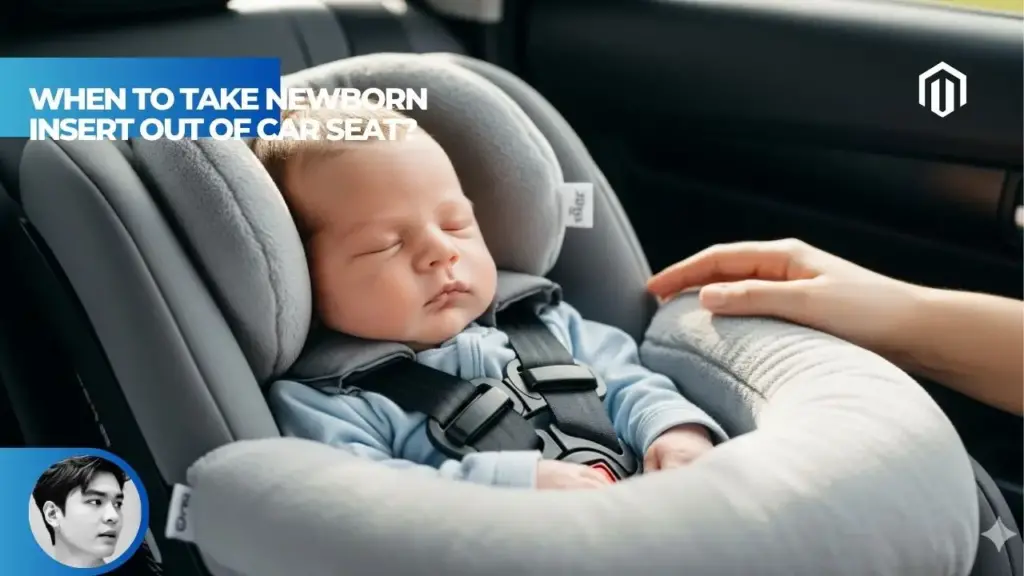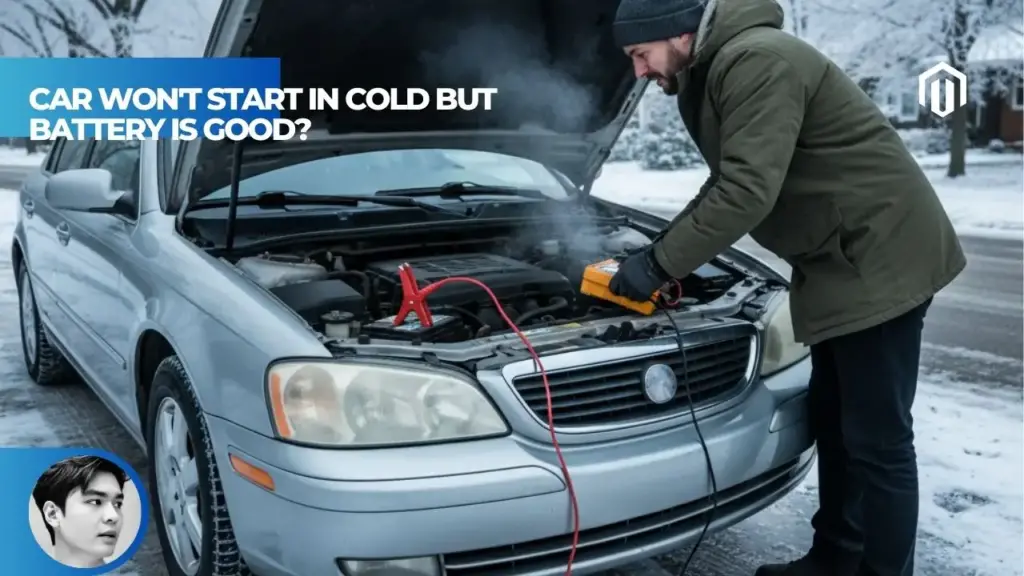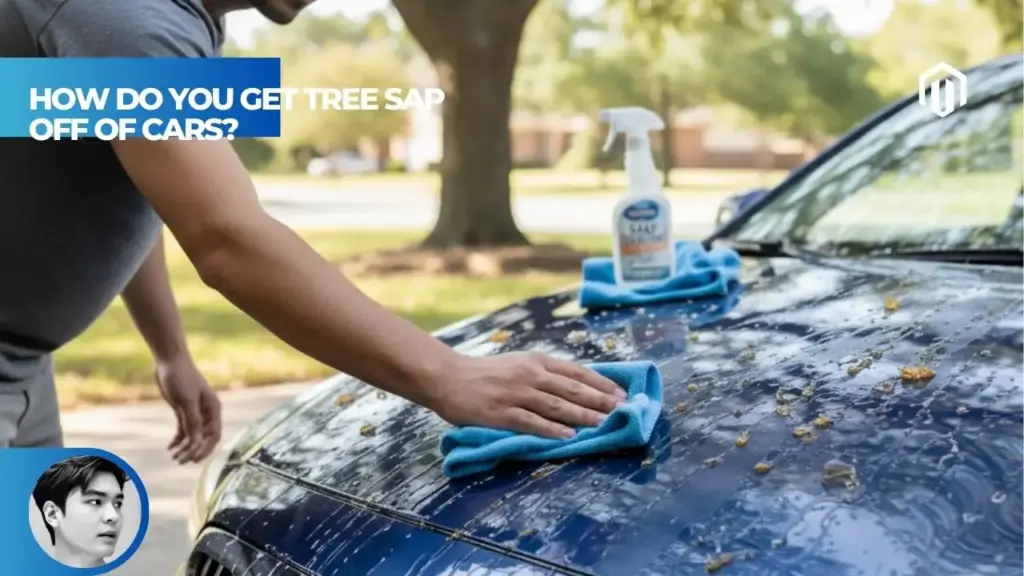You may also like:
Remove the newborn insert from your car seat when your baby reaches the manufacturer’s specified weight limit (typically 11-12 pounds) or height limit as stated in your specific car seat manual. Never remove the insert prematurely, as this can compromise your baby’s safety and proper positioning in the seat, and always check that harness straps sit at or just below shoulder level after removal.
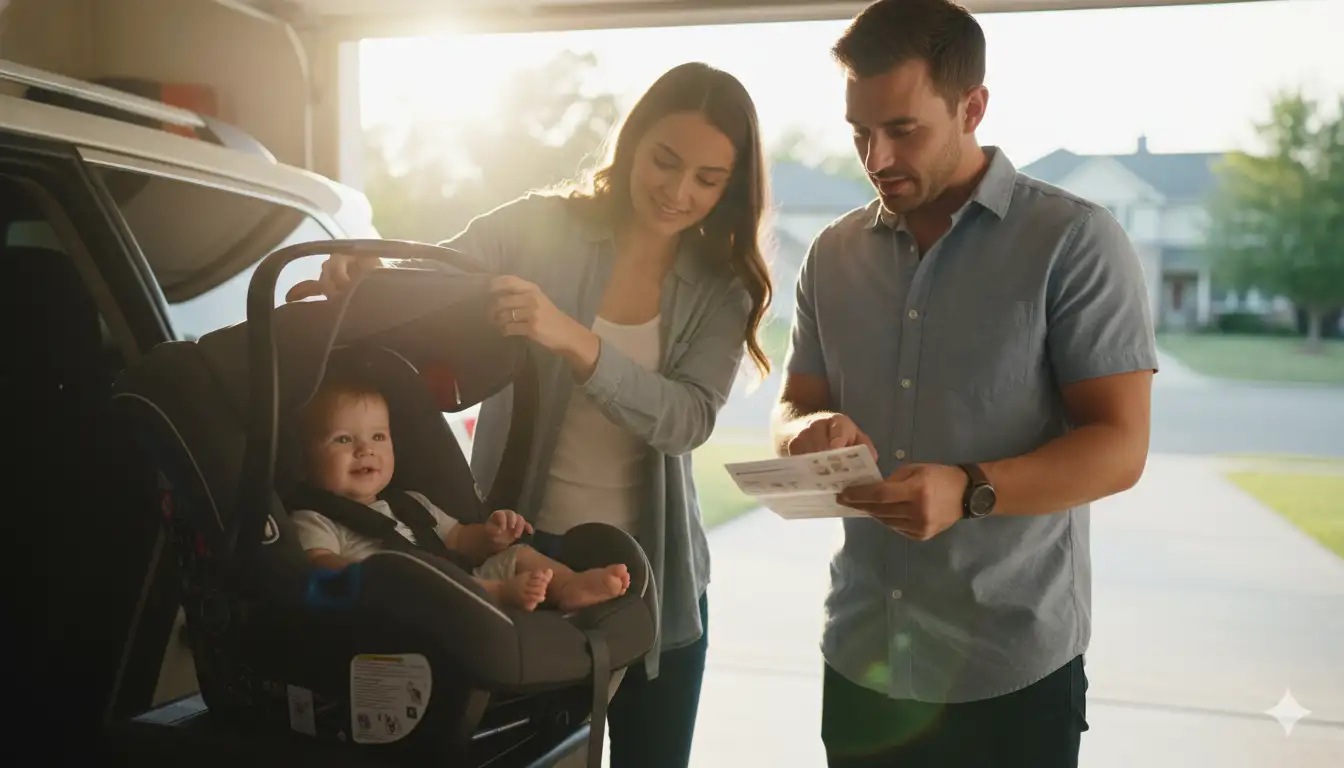
Primary Removal Criteria Based on Manufacturer Guidelines
Understanding when to remove your car seat’s newborn insert requires careful attention to manufacturer specifications rather than general guidelines. Each car seat model has unique requirements that ensure your baby’s optimal safety and comfort during this crucial transition period.
Newborn Insert Removal Weight Limit
Most car seat manufacturers specify a weight limit of 11-15 pounds for newborn insert removal, with the majority falling in the 11-12 pound range[1]. This weight threshold isn’t arbitrary—it represents the point at which your baby’s body mass provides adequate support without the extra padding. The American Academy of Pediatrics (AAP) emphasizes that these weight limits have been crash-tested extensively to ensure optimal protection.
Popular car seat models have varying weight limits:
- Chicco KeyFit series: 11 pounds
- Graco SnugRide: 12 pounds
- Nuna PIPA: 11 pounds
- Britax B-Safe: 11 pounds
According to Autvex safety experts, parents often mistakenly assume all inserts have the same removal criteria, leading to premature or delayed removal that could compromise safety.
Infant Insert Height Limit
Height restrictions for newborn inserts typically aren’t explicitly stated but become evident when your baby’s head approaches within one inch of the car seat shell’s top edge[2]. This visual indicator often occurs before weight limits are reached, especially for longer babies who may be leaner.
The insert’s purpose is maintaining proper head and neck alignment for smaller infants. Once your baby grows tall enough that the insert causes their head to sit too high, it’s counterproductive to safety. Some manufacturers like Maxi-Cosi specify that if your baby’s head is above the insert’s top edge at 22-24 inches tall, removal is necessary regardless of weight.
Car Seat Manual Insert Guidelines
Your car seat manual is the definitive authority for insert removal timing[3]. These guidelines supersede any general advice because each seat undergoes specific crash testing with its unique insert configuration. Manuals typically provide clear removal instructions in the newborn insert section, often with accompanying diagrams.
Key information to locate in your manual:
| Manual Section | Information Provided |
|---|---|
| Newborn Insert | Weight/height limits for use |
| Installation | How insert affects harness routing |
| Adjustments | Steps for safe removal |
| Warnings | Risks of improper use |
Manufacturer Specific Insert Limits (Chicco, Graco, Nuna)
Different manufacturers have developed varying approaches to newborn support, reflected in their specific removal guidelines. Chicco’s KeyFit models require removal at 11 pounds, while their newer KeyFit 35 extends this slightly[1]. Graco’s approach differs with some models featuring two-piece inserts allowing partial removal at different stages.
Nuna’s PIPA series, popular among parents driving luxury SUVs, specifies 11 pounds but includes an additional body support pad removable at 5 pounds. Britax uses a multi-layer system where the lower insert removes at 20 pounds while the head support stays until 11 pounds. Understanding your specific model prevents confusion when generic advice doesn’t match your seat’s design.
Signs Your Baby Has Outgrown the Newborn Insert
Physical indicators often provide clearer guidance than numbers alone when determining if your baby has outgrown their newborn insert. Recognizing these signs helps ensure timely removal for both safety and comfort.
Outgrown Newborn Insert Signs
The most reliable indicators that your baby has outgrown the insert include visible discomfort, restricted movement, and improper harness positioning[4]. When babies begin showing frustration during car seat use that wasn’t present before, it often signals they’ve outgrown the extra padding. Their increased head control and body strength mean they no longer need the additional support the insert provides.
Watch for these specific signs:
- Baby’s shoulders appear compressed or hunched
- Excessive sweating despite normal temperatures
- Red marks from the insert after short trips
- Baby actively pushes against the insert
- Difficulty achieving proper harness tightness
Baby Looks Squished in Car Seat
When your baby appears cramped or “squished” in their seat, it’s a clear visual indicator for removal consideration. The insert should support, not compress your baby[2]. This squished appearance often manifests as the baby’s chin being pushed toward their chest or their arms being forced into unnatural positions.
Parents frequently report this occurring around 3-4 months when babies experience growth spurts. The padding that once provided cozy support now restricts natural positioning. If you notice your baby’s legs seem excessively bent or their torso appears compressed, document with photos to compare over time—gradual changes can be hard to notice day-to-day.
Insert Interferes with Harness Straps
Proper harness positioning is critical for crash protection, and the insert should never compromise this safety feature. When the insert causes harness straps to sit above your baby’s shoulders in rear-facing position, immediate removal is necessary[5]. This misalignment reduces the harness’s ability to properly restrain your child during sudden stops or collisions.
The harness should lie flat against your baby’s body without the insert creating gaps or bulges. If you struggle to tighten the harness adequately because the insert creates too much bulk, or if the chest clip consistently rides up despite proper initial placement, these indicate interference requiring insert removal.
Newborn Insert Age Limit
While age alone shouldn’t determine removal timing, most babies outgrow their newborn inserts between 3-6 months old[3]. This wide range reflects individual growth variations—some robust 3-month-olds may exceed weight limits while petite 6-month-olds might still need the support. Premature babies often require inserts longer than their chronological age would suggest.
Autvex research indicates that focusing solely on age leads to approximately 30% of parents removing inserts inappropriately early or late. Instead, age serves as a general benchmark to prompt closer evaluation of weight, height, and physical signs.
Fit and Safety Factors After Insert Removal
The transition from using a newborn insert to the seat alone requires careful attention to maintain proper safety standards. Understanding how this change affects your baby’s position and protection ensures continued safe travel.
Proper Harness Fit After Insert Removal
After removing the insert, achieving correct harness fit becomes even more critical. The harness straps must sit at or just below your baby’s shoulders when rear-facing[6]. This positioning may require adjusting the harness height slots, which many parents overlook during insert removal.
Perform the pinch test: try to pinch the harness strap vertically at your baby’s collarbone. If you can pinch any webbing, the harness is too loose. The chest clip should align with armpit level, not ride up toward the neck or slip down to the belly. Without the insert’s bulk, you’ll likely need to tighten straps more than before.
Head and Neck Support Need
Concerns about head and neck support after insert removal are common, but properly developed babies who meet removal criteria have sufficient muscle control[2]. The car seat’s design provides adequate support without the insert once your baby reaches appropriate developmental milestones.
Some head movement during travel is normal and not dangerous for babies with adequate head control. The car seat’s side wings and headrest continue providing lateral support. If your baby’s head flops forward excessively when asleep, check the seat’s recline angle—it may need adjustment rather than the insert being replaced.
Infant Position in Car Seat Without Insert
Without the newborn insert, your baby sits deeper in the car seat, which is intentional design. This lower position allows the seat’s safety features to work optimally for larger infants[4]. The seat’s geometry provides appropriate support zones for the child’s current size.
Key positioning checks post-removal:
- Baby’s back flat against seat back
- Bottom positioned at seat crease
- Head below shell top with 1-inch minimum clearance
- Shoulders aligned with harness slots
- Crotch buckle at appropriate distance
Risk of Positional Asphyxia Head Support
Positional asphyxia risks actually increase when inserts are used beyond recommended limits. Oversized babies in newborn inserts face chin-to-chest positioning that restricts airways[7]. This risk explains why timely removal is crucial despite parental concerns about perceived support loss.
The NHTSA warns against adding aftermarket head supports to compensate for removed inserts. These unapproved additions haven’t undergone crash testing and may create new dangers. The seat’s design accounts for appropriate head positioning without modifications once your child meets removal criteria.
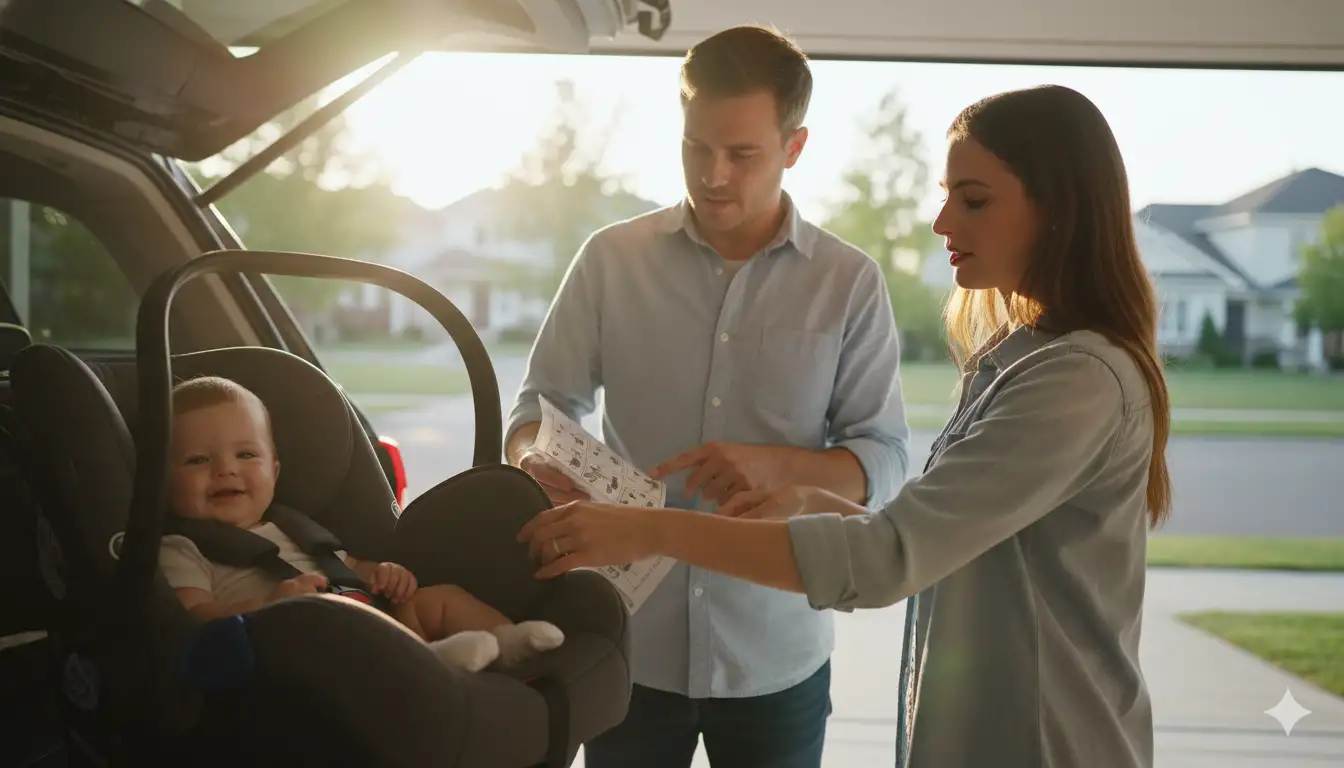
Understanding Different Insert Types and Components
Modern car seats feature various insert configurations, each with specific removal guidelines. Understanding your seat’s particular system ensures proper use throughout your baby’s growth stages.
Body Insert vs Head Support Removal
Many car seats feature two-piece systems where body and head portions remove at different times[1]. The body insert, providing torso and bottom cushioning, typically removes first when weight limits are reached. Head support components may remain longer, sometimes until the child outgrows the infant seat entirely.
For example, the Chicco KeyFit 30’s body insert removes at 11 pounds, but the head insert can stay until 22 pounds if needed. This staged approach accommodates babies who gain weight quickly but still benefit from head support. Always consult your manual for specific sequencing—some seats require simultaneous removal of all components.
Two-Piece Infant Insert Guidelines
Two-piece insert systems offer flexibility but require careful attention to proper configuration. Each piece has independent removal criteria that must be followed precisely[3]. Mixing configurations not approved in the manual could compromise crash protection.
Common two-piece configurations include:
| Component | Typical Removal Weight | Purpose |
|---|---|---|
| Lower body pad | 5-7 pounds | Boost smaller newborns |
| Main body insert | 11-12 pounds | Torso support |
| Head hugger | 15-22 pounds | Lateral head support |
| Shoulder pads | With main insert | Harness comfort |
Car Seat Wedge Insert Removal
Wedge inserts, designed to achieve proper recline angles, follow different removal criteria than newborn inserts. These angular supports typically remain until transitioning to forward-facing[2]. Removing them prematurely affects the seat’s recline, potentially causing airway positioning issues.
Some convertible seats like those popular in larger vehicles include wedges specifically for newborn recline that remove around 3 months. Others integrate permanent wedge features. Understanding which type your seat uses prevents confusion between cosmetic padding and structural components.
When to Remove the Body Insert but Keep the Head Support
Selective removal scenarios arise when babies have typical weight gain but longer torsos or when preemies need extended support. Removing the body insert while retaining head support is only appropriate when explicitly permitted by the manual[5].
This configuration works well for babies around 11-13 pounds who’ve outgrown the body insert’s weight limit but still benefit from lateral head stability. However, never create custom configurations by mixing components from different seats or using only portions of multi-piece inserts unless specifically instructed.
Process and Procedure for Safe Removal
Removing the newborn insert requires methodical attention to maintain car seat integrity and safety. Following proper procedures ensures your baby’s continued protection.
How to Remove Newborn Insert from Car Seat
Begin removal by completely removing the car seat from your vehicle for better access[3]. This allows proper visibility and prevents accidentally dropping small parts in hard-to-reach vehicle areas. Work in good lighting where you can reference the manual throughout the process.
Step-by-step removal process:
- Photograph current configuration for reference
- Loosen harness straps completely
- Remove baby if present
- Locate insert attachment points (usually beneath harness slots)
- Carefully disconnect any snaps or Velcro
- Thread harness straps back through appropriate slots
- Remove insert components in order specified by manual
- Re-thread harness if necessary
- Verify all components are properly reassembled
Re-adjusting Harness Straps After Insert Removal
Harness adjustment after insert removal is mandatory for proper fit. Most babies require moving harness straps to different slot positions[6]. Without the insert’s boost, the previous slots likely position straps too high for rear-facing safety requirements.
Locate the harness slots at or just below your baby’s shoulders when seated. Many parents need to take time for careful adjustment, as rushed reinstallation creates safety gaps. Thread straps through the selected slots, ensuring they’re not twisted and lie flat against the seat back.
Checking Car Seat Fit CPST
Consulting a Certified Child Passenger Safety Technician (CPST) after insert removal provides professional verification of proper configuration. Free car seat checks are available nationwide through SafeKids coalitions[8]. These trained professionals identify installation issues parents commonly miss.
CPSTs evaluate:
- Correct insert removal completion
- Appropriate harness positioning
- Proper installation angle
- Overall seat suitability for child’s size
- Vehicle-specific installation considerations
Many dealerships now offer CPST services during vehicle purchase to ensure proper seat installation.
First Car Seat Adjustment
The first adjustment after insert removal sets the foundation for continued proper use. This initial setup often requires 20-30 minutes to complete thoroughly[4]. Rushing risks missing critical adjustments that compromise safety.
Document your adjustments with photos showing harness height, strap routing, and your baby’s position. This reference helps maintain consistency if others use the seat or if you need to reinstall after cleaning. Create a checklist noting current harness slot position, recline angle, and any specific adjustments made for your vehicle.
Safety Considerations and Warnings
Understanding safety implications of insert use and removal helps parents make informed decisions protecting their children. These considerations extend beyond basic weight and height guidelines.
Is It Safe to Remove Infant Insert Early
Premature insert removal is never safe and significantly increases injury risk[7]. Early removal causes babies to sit too low in the seat, positioning the harness incorrectly across their body. This misalignment reduces crash protection effectiveness by allowing excessive movement during impact.
The consequences of early removal include:
- Increased ejection risk during crashes
- Submarine effect where baby slides under harness
- Improper force distribution across body
- Reduced side-impact protection
- Compromised head and neck support
Even if your baby seems uncomfortable, never remove the insert before meeting manufacturer criteria.
Aftermarket Car Seat Inserts Safety
Aftermarket inserts pose serious safety risks and should never be used in car seats[8]. These products haven’t undergone crash testing with your specific seat and can interfere with designed safety features. The NHTSA explicitly warns against any additions not included with the original seat.
Common dangerous aftermarket products:
- Supplemental head supports
- Additional body padding
- Replacement inserts from different brands
- Generic “universal” inserts
- Homemade support solutions
Only use inserts specifically designed and tested for your exact car seat model. If you’ve lost your original insert, contact the manufacturer for proper replacement rather than substituting alternatives.
Rear-Facing Wedge Removal
Rear-facing wedges differ from newborn inserts and typically remain throughout rear-facing use. These angle adjusters maintain proper recline for airway protection[2]. Removing them prematurely causes excessive upright positioning that can restrict breathing, especially in younger infants.
Some convertible seats include removable wedges for different recline stages. These might adjust based on vehicle seat angle rather than child’s age or weight. Understanding your seat’s specific wedge purpose prevents accidental removal of critical safety components. Always verify whether components are cosmetic padding or structural elements before removal.
Where to Find Insert Weight Limit on Car Seat
Locating removal criteria on your car seat requires checking multiple sources. The primary location is the manual’s newborn insert section[3]. However, many seats also include labels on the insert itself or stickers on the seat shell providing quick reference.
Common information locations:
| Location | Information Type |
|---|---|
| Manual cover/index | Page reference for insert section |
| Insert tag | Weight/height limits |
| Seat side label | Basic usage parameters |
| Manufacturer website | Updated guidelines and videos |
| QR codes | Direct links to specific instructions |
Autvex recommends photographing these references with your phone for quick access during pediatrician visits when growth tracking occurs.
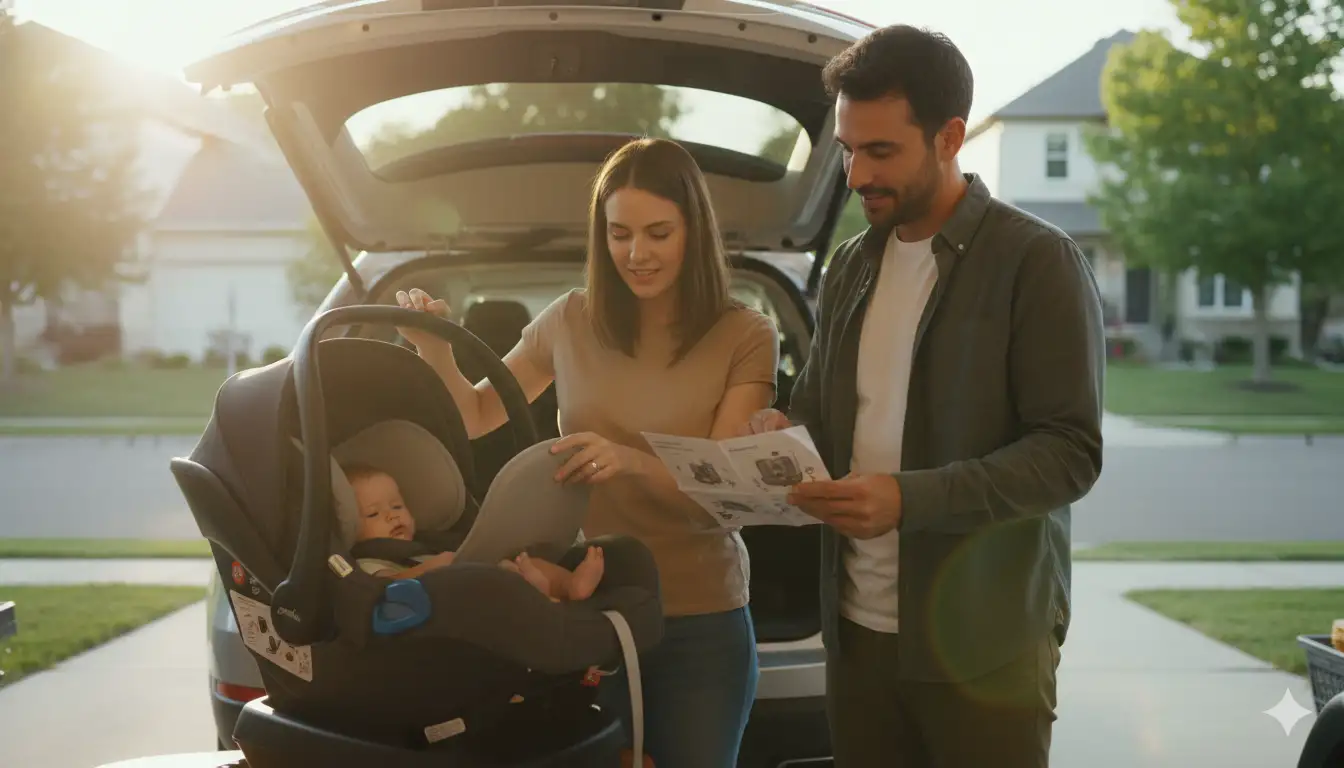
Key Takeaways
- Always check your specific manual first—each seat has unique weight limits from 11-15 pounds
- Never remove insert before reaching manufacturer specifications—this compromises critical safety features
- Watch for physical signs: baby looking squished or harness straps sitting above shoulders
- Typical removal age is 3-6 months but weight/height matter more than age
- Two-piece inserts may remove separately—follow manual for staged removal instructions
- Readjust harness straps after removal—they should sit at or below shoulders
- Never use aftermarket inserts—only manufacturer-approved components are crash-tested
Decision Path / Next Steps
Your immediate action depends on where your baby falls within the growth spectrum and your specific car seat model. Start by locating your car seat manual—if you’ve misplaced it, virtually all manufacturers provide PDF versions online searchable by model number. Find the newborn insert section and highlight or photograph the specific weight and height limits for quick reference.
Weigh your baby accurately using a reliable scale, preferably at a pediatric appointment for precision. If your baby is approaching but hasn’t reached the limit, begin monitoring weekly. Document their weight progression and watch for physical signs like appearing cramped or harness positioning issues. When they reach approximately 90% of the weight limit, prepare for transition by reviewing removal instructions.
If your baby has reached the removal threshold, schedule adequate time for proper removal and adjustment—this isn’t a task to rush. Choose a time when your baby is napping or contentedly occupied elsewhere, as you’ll need 20-30 minutes of focused attention. Remove your car seat from the vehicle entirely for better access and visibility during the process. Follow the manual’s step-by-step removal instructions precisely, photographing each step for future reference.
After removal, the critical safety check begins. Ensure harness straps route correctly through designated slots at or below your baby’s shoulders. The chest clip must sit at armpit level, and you shouldn’t be able to pinch any slack in the harness straps at the collarbone. If anything seems incorrect or you’re uncertain about proper fit, schedule a free car seat safety check with a CPST through SafeKids.org.
For future-proofing, understand your car seat’s next transition points. If using an infant seat, know the maximum height and weight limits for the seat itself—typically 30-35 pounds or when baby’s head is within one inch of the shell top. If you have a convertible seat, familiarize yourself with extended rear-facing recommendations and forward-facing requirements.
Document your configuration with photos showing the harness routing, slot positions, and your baby positioned in the seat. Share these with all caregivers who transport your child, ensuring consistent proper use. Set a reminder to reassess fit monthly as babies grow rapidly during this stage. Remember that as your child grows, you may need to adjust the recline angle or move to higher harness slots even without insert changes. Proper car seat use remains one of the most effective ways to protect your child during travel, making these careful adjustments worthwhile investments in their safety.
Frequently Asked Questions
What are the signs my baby is ready for the newborn insert to be removed?
Baby exceeds manufacturer’s weight limit (usually 11-15 pounds), looks squished or cramped, harness straps sit above shoulders, or manual specifies removal criteria[1]. Watch for visible discomfort or restricted movement.
What is the average weight for removing the infant car seat insert?
Most manufacturers specify 11-12 pounds as the removal weight, though some range from 11-15 pounds depending on the car seat model[1]. Always check your specific manual.
Can I remove the head support insert and keep the body insert?
Yes, if your car seat has a two-piece insert system and the manual allows partial removal[3]. Check manufacturer guidelines for specific instructions about staged removal.
Does the newborn insert interfere with the car seat harness?
It can if baby has outgrown it, causing straps to sit too high above shoulders[5]. Proper fit requires straps at or below shoulder level for rear-facing position.
Is it required to use the newborn car seat insert?
Not always—check your manual[3]. Some seats require it for babies under certain weights, while others make it optional based on fit.
How many months old is a baby when they outgrow the insert?
Typically between 3-6 months, though this varies based on baby’s growth rate and the specific weight/height limits of your car seat[4]. Individual growth matters more than age.
What is the risk of removing the newborn insert too soon?
Premature removal can cause baby to sit too low, compromise harness effectiveness, and increase risk of positional asphyxia from poor head/neck support[7]. Always follow manufacturer guidelines.
How should the car seat harness fit once the insert is removed?
Harness straps should be at or just below baby’s shoulders for rear-facing, pass the pinch test, and chest clip should be at armpit level[6]. Readjust height slots as needed.
Should I use an aftermarket insert if my baby is too small?
No, only use inserts that came with your car seat[8]. Aftermarket inserts aren’t crash-tested and can compromise safety significantly.
Why does the car seat manual not specify a removal age?
Because babies grow at different rates; weight and height are more accurate indicators than age for proper car seat fit[3]. Individual growth varies significantly.
When to remove the rear-facing wedge from a convertible car seat?
Follow manufacturer guidelines, typically when transitioning to forward-facing or when child reaches specified weight/height limits for wedge use[2]. Never remove structural wedges prematurely.
References
- Safe in the Seat. (2025). When To Take Out Newborn Insert in Car Seat. safeintheseat.com. Retrieved from https://autvex.com/when-to-take-newborn-insert-out-of-car-seat
- Maxi-Cosi. (2025). When to remove newborn insert guidelines. hpfwater.com. Retrieved from https://autvex.com/when-to-take-newborn-insert-out-of-car-seat
- Chicco USA. (2025). Infant Car Seat Inserts: Usage and When to Remove. chiccousa.com. Retrieved from https://autvex.com/when-to-take-newborn-insert-out-of-car-seat
- Go Girl UK. (2022). When to Take the Newborn Insert Out of the Car Seat. gogirl.co.uk. Retrieved from https://autvex.com/when-to-take-newborn-insert-out-of-car-seat
- Baby Care Diary. (2025). Safely Remove Newborn Car Seat Insert – New Parent’s Guide. babycarediary.com. Retrieved from https://autvex.com/when-to-take-newborn-insert-out-of-car-seat
- Wirecutter. (2024). The 4 Best Infant Car Seats of 2025. nytimes.com. Retrieved from https://autvex.com/when-to-take-newborn-insert-out-of-car-seat
- University of California Santa Barbara. (2023). 5 Must-Know Practices For Car Seat Inserts For Newborns. ece.ucsb.edu. Retrieved from https://autvex.com/when-to-take-newborn-insert-out-of-car-seat
- American Academy of Pediatrics. (2025). Car Seats: Information for Families. healthychildren.org. Retrieved from https://autvex.com/when-to-take-newborn-insert-out-of-car-seat

I am a senior automotive analyst at Autvex. Expert vehicle evaluations, in-depth reviews, and objective analysis helping readers make informed automotive decisions with years of industry experience.

